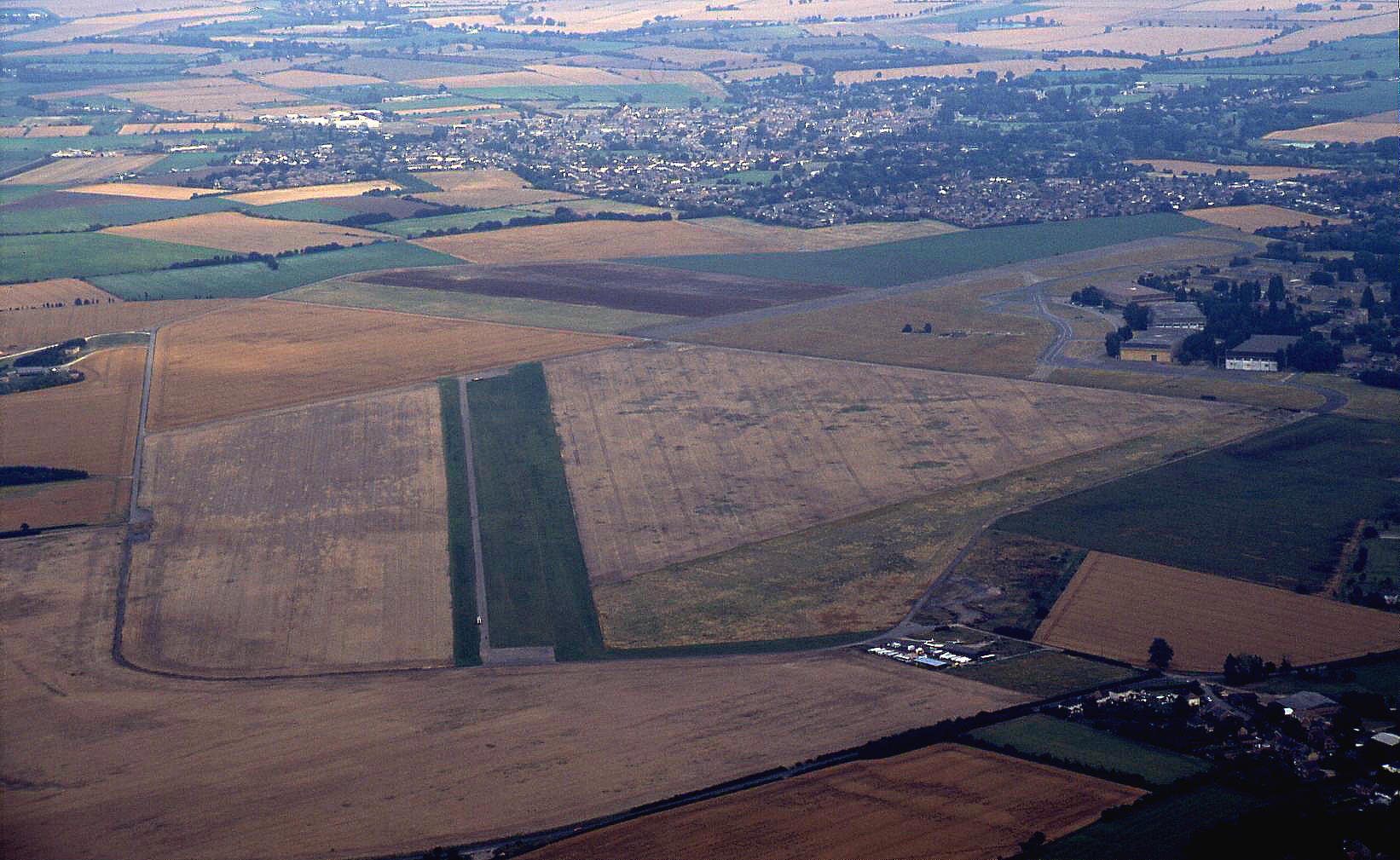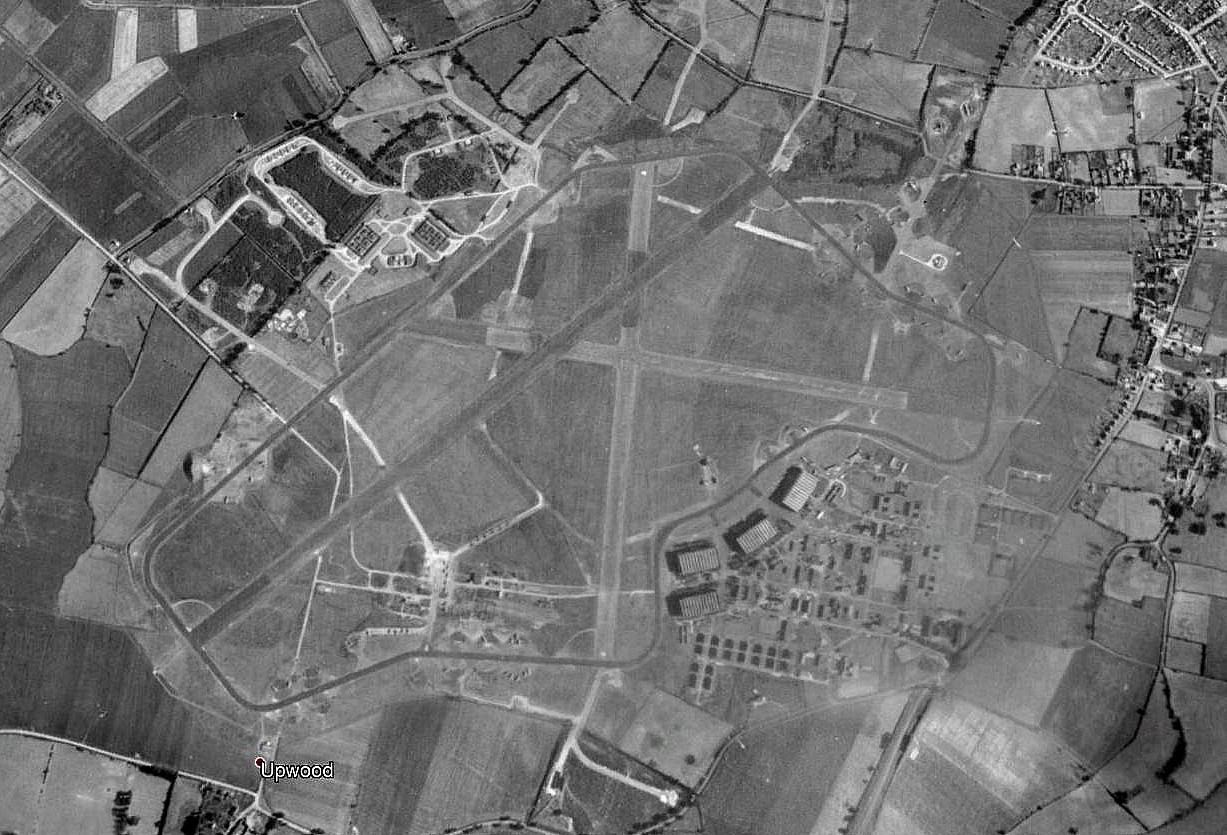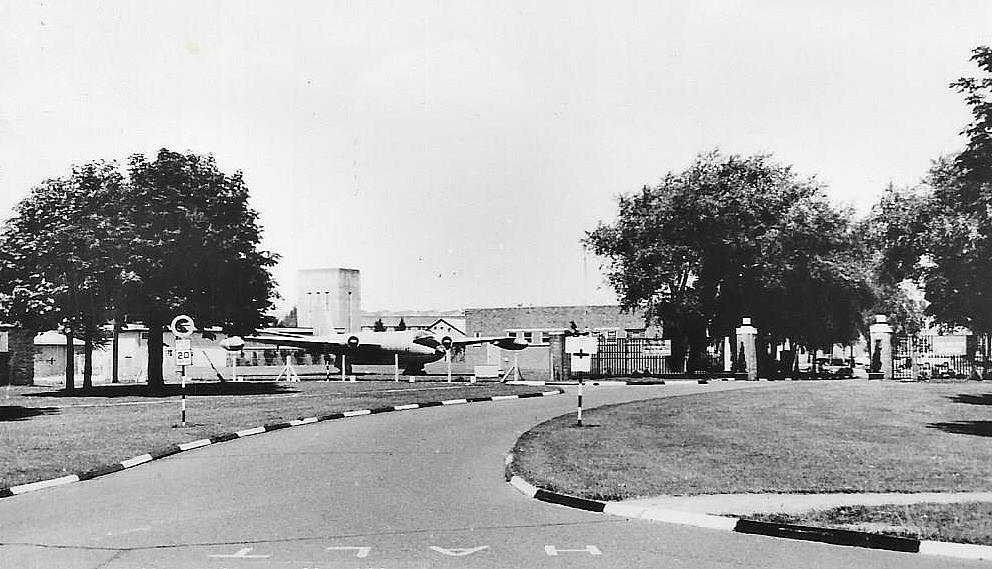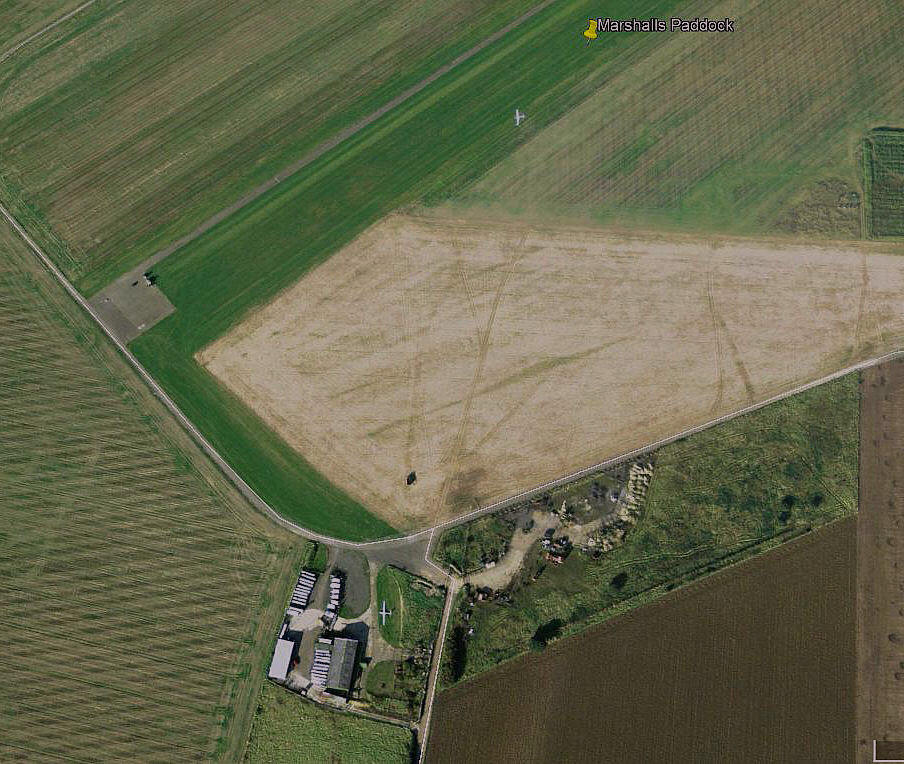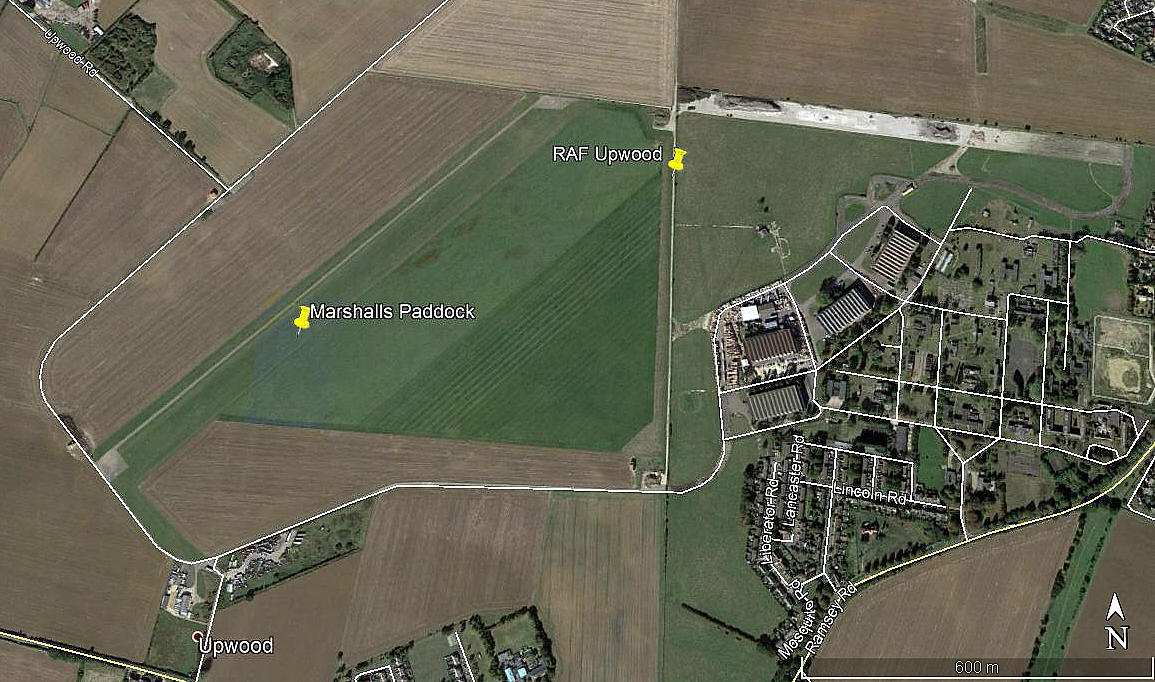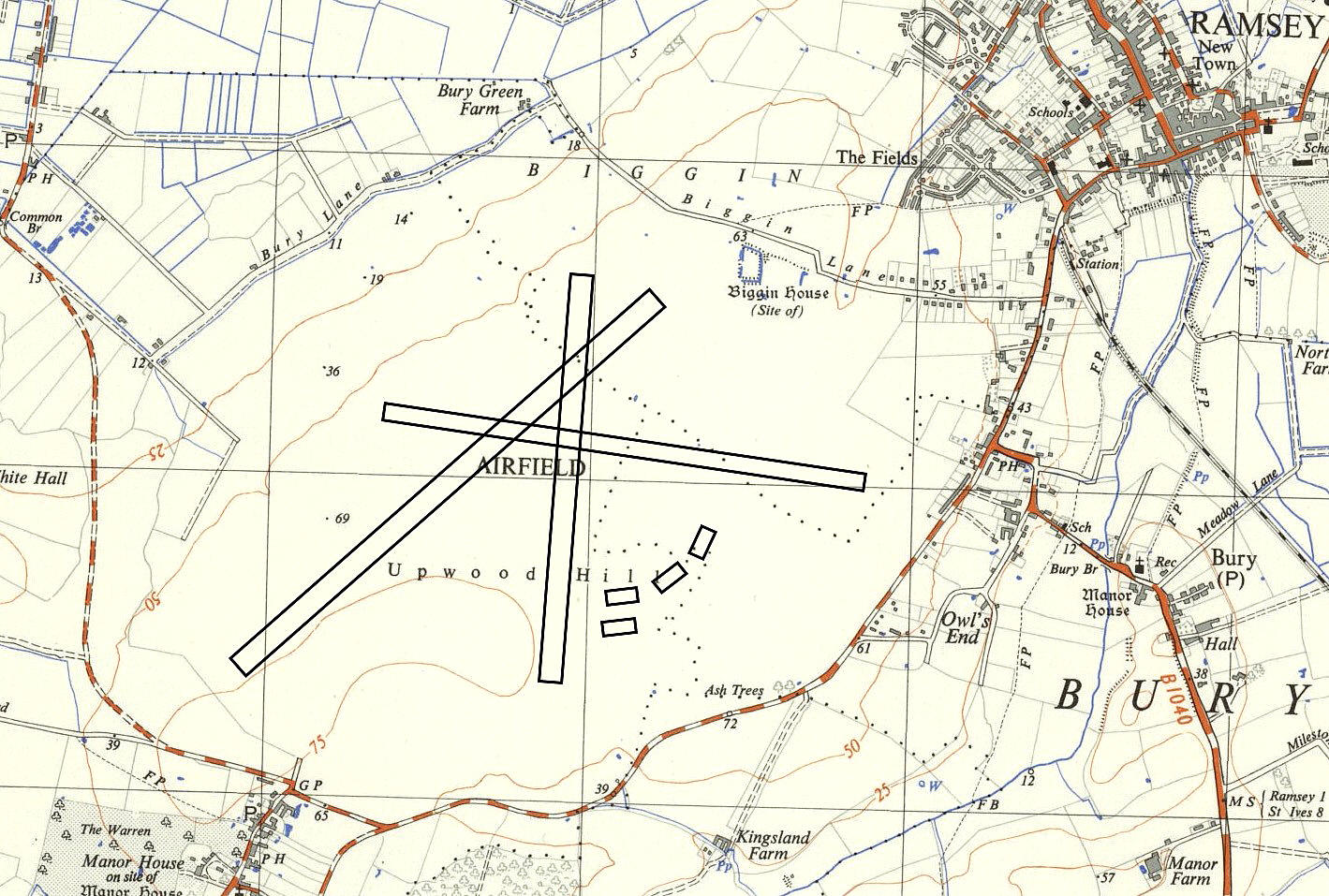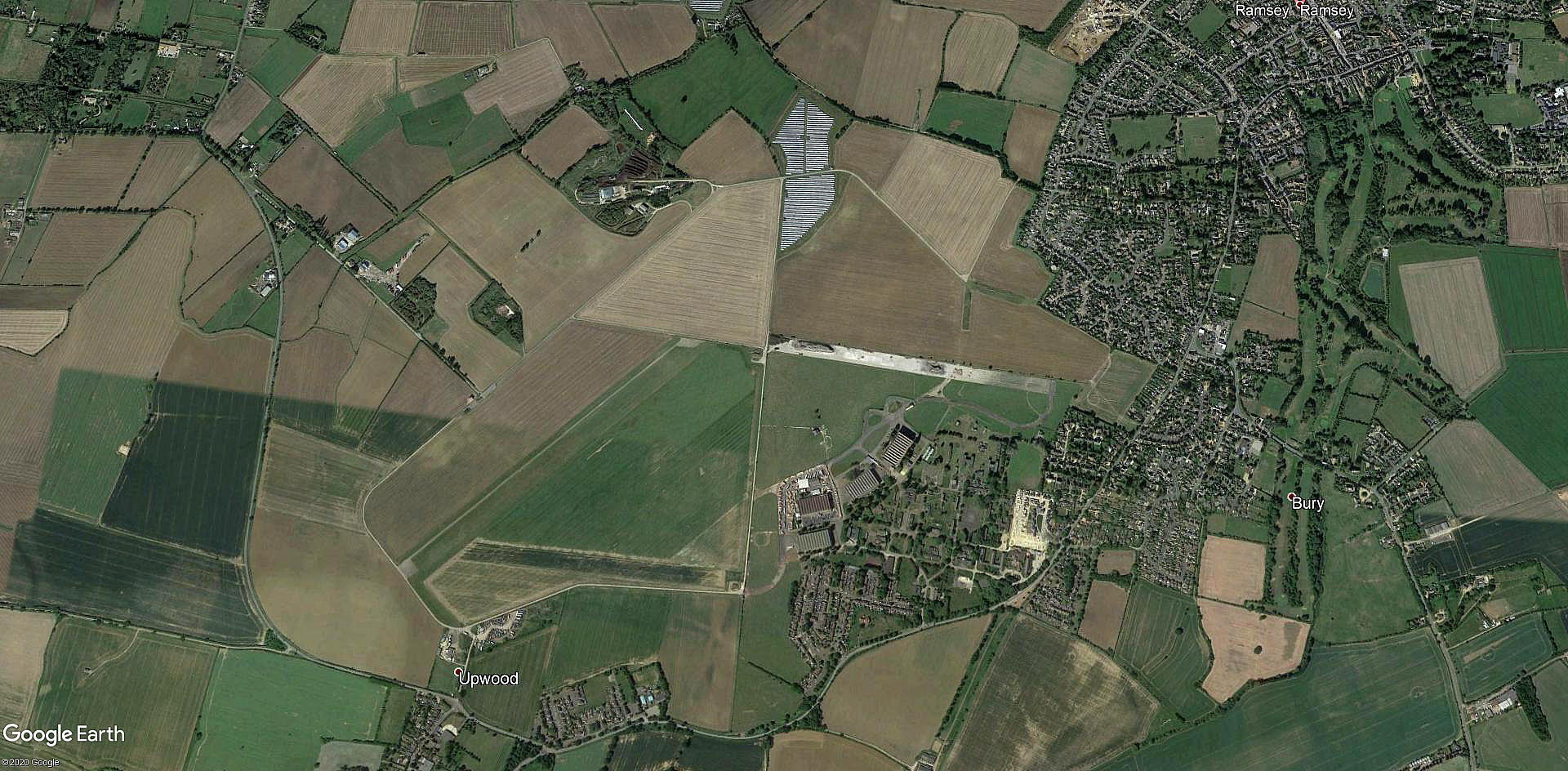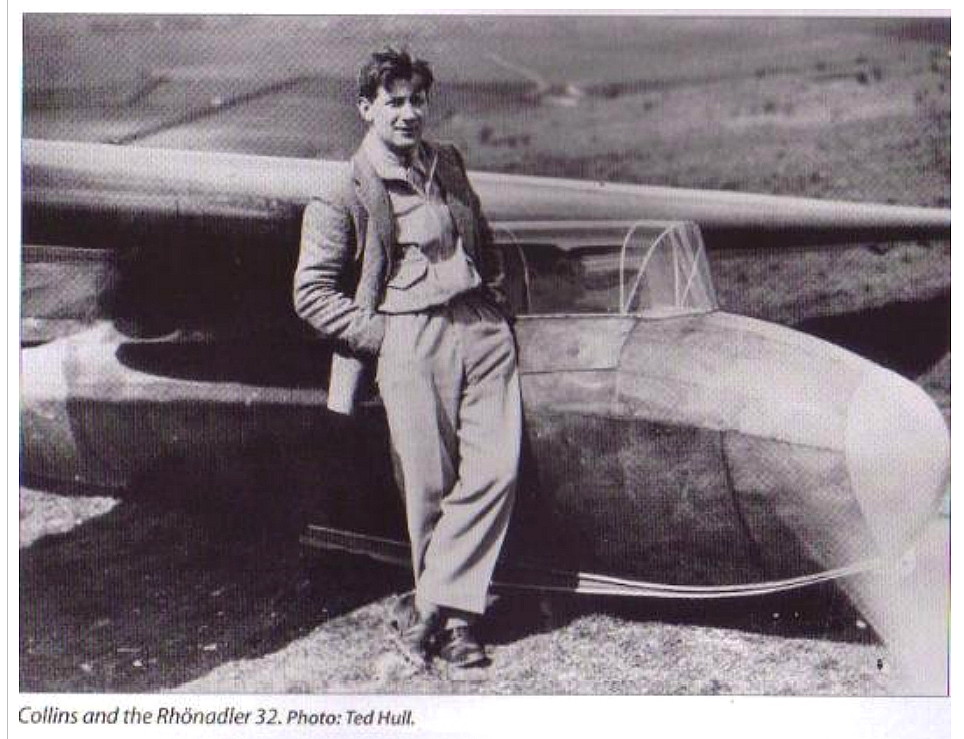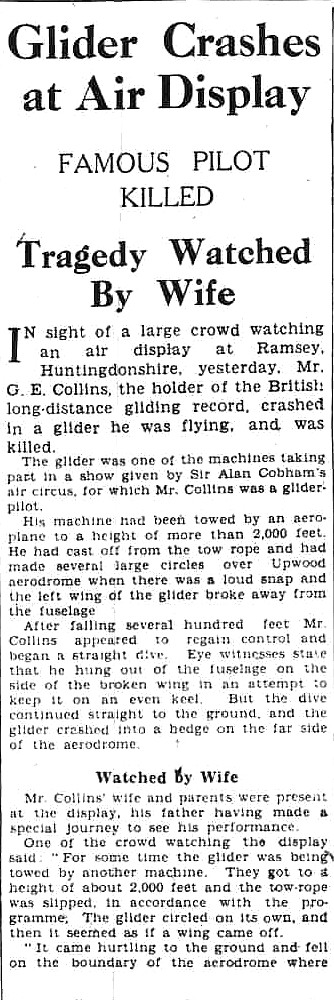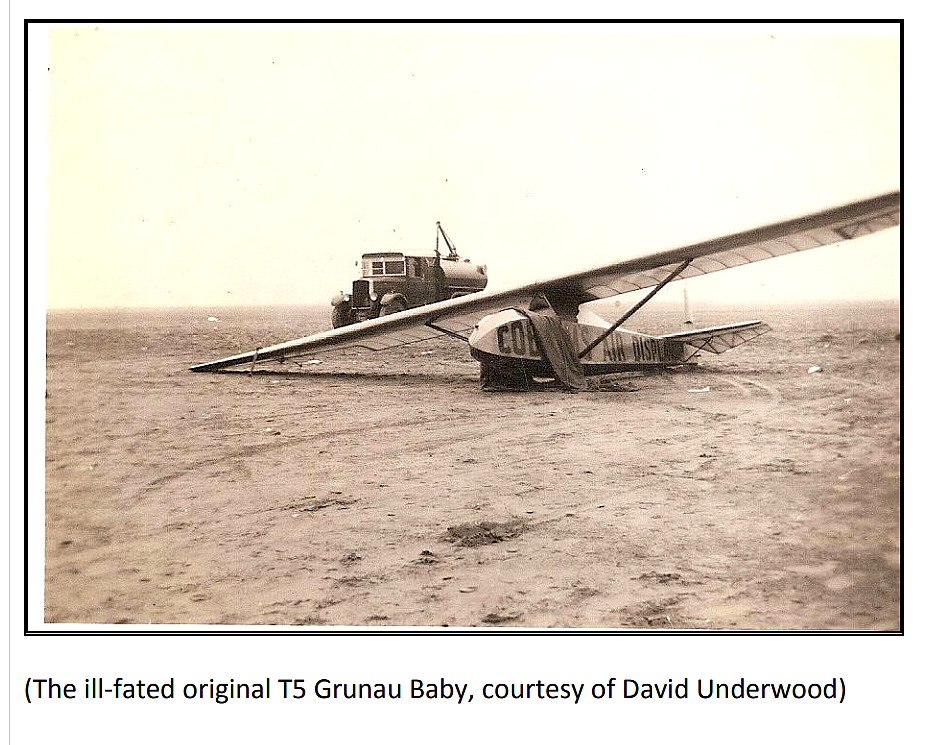Upwood
UPWOOD: Military aerodrome (WW1 and WW2) later gliding site
(Also known as BURY and also RAMSEY)
Note: The first two pictures above are by the author. The B&W vertical view was kindly provided by Mr Michael T Holder
Military users: WW1: RFC/RAF Home Defence Night Landing Ground
75 [Home Defence) Sqdn (Royal Aircraft Factory B.E.2)
Note: 75 Sqdn were based at ELMSWELL in 1917 and this was a satellite airfield, often used for night flying exercises
RAF Night Training Squadron Station 1918 to 1919
190 Night Training Sqdn (Avro 504K)
191 Night Training Sqdn (Royal Aircraft Factory B.E.2, F.E.2b and Airco DH.6)
INTER WAR YEARS
Used by Sir Alan Cobham's National Aviation Day No.1 Tour as a temporary aerodrome on the 30th July 1935 - see the Mike Holder gallery below.
Work commenced to make this an RAF Station in 1936 and in 1937 No.52 Sqdn moved in with their Hawker Hind light bombers and No.63 Sqdn flying the Hawker Audax.
WW2: RAF Bomber Command 2 Group 8 Group
17 OTU [Operational Training Unit] (Bristol Blenheims)
35 Sqdn (Avro Ansons, Fairey Battles & Bristol Blenheims)
39 & 139 (Jamaica) Sqdns (DH Mosquitos)
52 & 63 Sqdns (Fairey Battles)
90 Sqdn (Blenheims)
156 Sqdn (Avro Lancasters)
Mosquito Major Servicing Section
Note: This picture from a postcard was kindly sent by Mike Charlton who has an amazing collection. See, www.aviationpostcard.co.uk
It appears after some research, that this Canberra B2 replaced a previous Gloster Meteor acting as the 'gate guardian'. But, it seems, this example is not what it appears to be. It is claimed to be WH723 dressed up as WJ642 of 34 Squadron and served as the 'gate guardian' until 1968. And, as you can see below, I have yet to find any evidence of 34 Squadron being based here, let alone flying Canberras.
If anybody can kindly offer advice and information, this will be much appreciated.
Post 1945: RAF Bomber Command?
7, 49 & 214 Sqdns (Avro Lincolns)
50, 61 & 76 Sqdns (English Electric Canberras)
USAFE use?
RAF Transport Command
102 Sqdn (Consolidated B-24 Liberators)
Flying Club: No.61 Sqn. Flying Group
Note: In the 1957 The Aeroplane directory, the No.61 Sqn. Flying Group were operating one DH82A Tiger Moth. Membership of the Group was restricted to No.61 Sqn. personnel only.
MARSHALLS PADDOCK (Gliding site)
Note: All four of these pictures were obtained from Google Earth ©
Operated by: From 1982 - Nene Valley Gliding Club
Runway: 05/23 1000 hard
NOTES: In 1995 the Nene Valley Gliding Club were facing eviction. Unable to find another site the new landowner, Mr Marshall Papworth, very kindly granted the club a ten year lease. When he died in 2000 the Club renamed the gliding site as MARSHALLS PADDOCK.
Location: W of B1096, S of B1040, WNW of Bury village, 1.5 nm SW of Ramsey
Period of operation: Military: WW1 1917 to 1919 1937 to 1985 when in USAFE control.
Civil gliding 1982 to -
Site area: WW1: 160 acres 960 x 686
Runways: WW2: 05/23 1829x46 hard 10/28 1463x46 hard
01/19 1280x46 hard
A MICHAEL T HOLDER GALLERY
The main reason Mike Holder was investigating UPWOOD was he when looking for evidence of Sir Alan Cobham's National Aviation Display No.1 Tour, held here on the 30th July 1935. This was before the old WW1 aerodrome site was being redeveloped for the RAF in 1936.
This display certainly made the news because the very well known glider pilot, Eric Collins, was killed during the display.
Starting 1932, Sir Alan Cobham's National Aviation Day display tours, the largest Tours of the U.K. ever seen, had a very good safety record - which, when you look at the relentless schedules the workaholic Cobham insisted on, seems to us today quite remarkable. For example, this 1935 Tour started at FAREHAM (HAMPSHIRE) on the 12th April and without a rest day visited 72 venues before splitting into two Tours on the 1st July.
The No.1 Tour then visited 88 venues before ending on the 29th September, and the No.2 Tour visited 84 venues, ending on the same day. Both of these Tours were scheduled without a rest day, but, quite probably, when they displayed at a venue for two consecutive days, probably Cobham regarded this as more than enough rest. The first part of the Tour had seven two day venues, the No.1 Tour had four and the No.2 Tour had eight. So all in all 244 venues were visited.
We don't know how many were cancelled due to bad weather but it seems that very few were, although some displays had to be curtailed.
THE ERIC COLLINS CRASH
We will never know for certain why Eric Collins decided to commit himself to a suicidal aerobatic manouevre on that day. It could be that with his wife and father in attendance, he was simply showing off? Either way he clearly lacked any understanding of how aircraft are constructed and the stress levels involved in the design. Which seems remarkable as he was a BGA instructor.
It appears that he departed from his normal routine to perform an outside or inverted loop, and the left wing broke off, with inevitable consequences.
This tragic event, which cannot be described as an accident, reminds me that air display pilots always insist that you should never divert from a well rehearsed routine. And, as one of my very experienced flying instructors told me - the two most dangerous words in aviation are - "Watch this".
We'd love to hear from you, so please scroll down to leave a comment!
Leave a comment ...
Copyright (c) UK Airfield Guide















